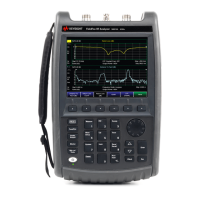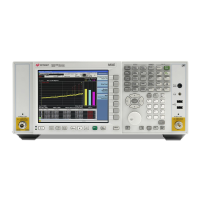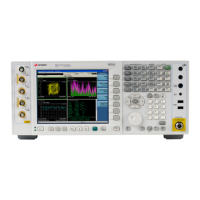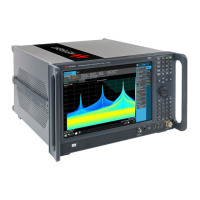Keysight N9927-90001 User’s Guide 435
Noise Figure Mode (Option 356 – CPU2 Only)
Calibration Wizard
— When the DUT output noise power is relatively low (i.e., the gain plus noise
figure of the DUT is less than 15 dB), measurement accuracy may also be
improved by using a low loss isolator on the preamplifier input. Due to the
output reflection coefficient of the DUT, reverse noise waves from the
preamplifier, when present, will contribute a different amount of noise
power during the measurement of the DUT than during the user calibration.
And, this change in receiver noise power can impact the measurement
accuracy.
— It is not necessary to use the same noise source in the user calibration as
will be used in the measurement. In some cases, it might be better to use a
different noise source in the user calibration than will be used in the
measurement. If this is done, it is important to set the ENR table for the
calibration noise source prior to the calibration, and to set the measurement
noise source prior to measuring the DUT.
— Prior to starting a user calibration, it is a good practice to connect the
preamplifier and noise source that will be used during the user calibration
and perform a noise figure measurement of the preamplifier itself (without a
user calibration). Use the same bandwidth and frequency settings that will
be used in the user calibration. A successful noise figure measurement
ensures that all of the connections (bias, control, and RF) have been made
properly. The user calibration can be started immediately following the
successful noise figure measurement of the preamplifier, with no change to
the setup.
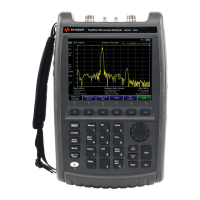
